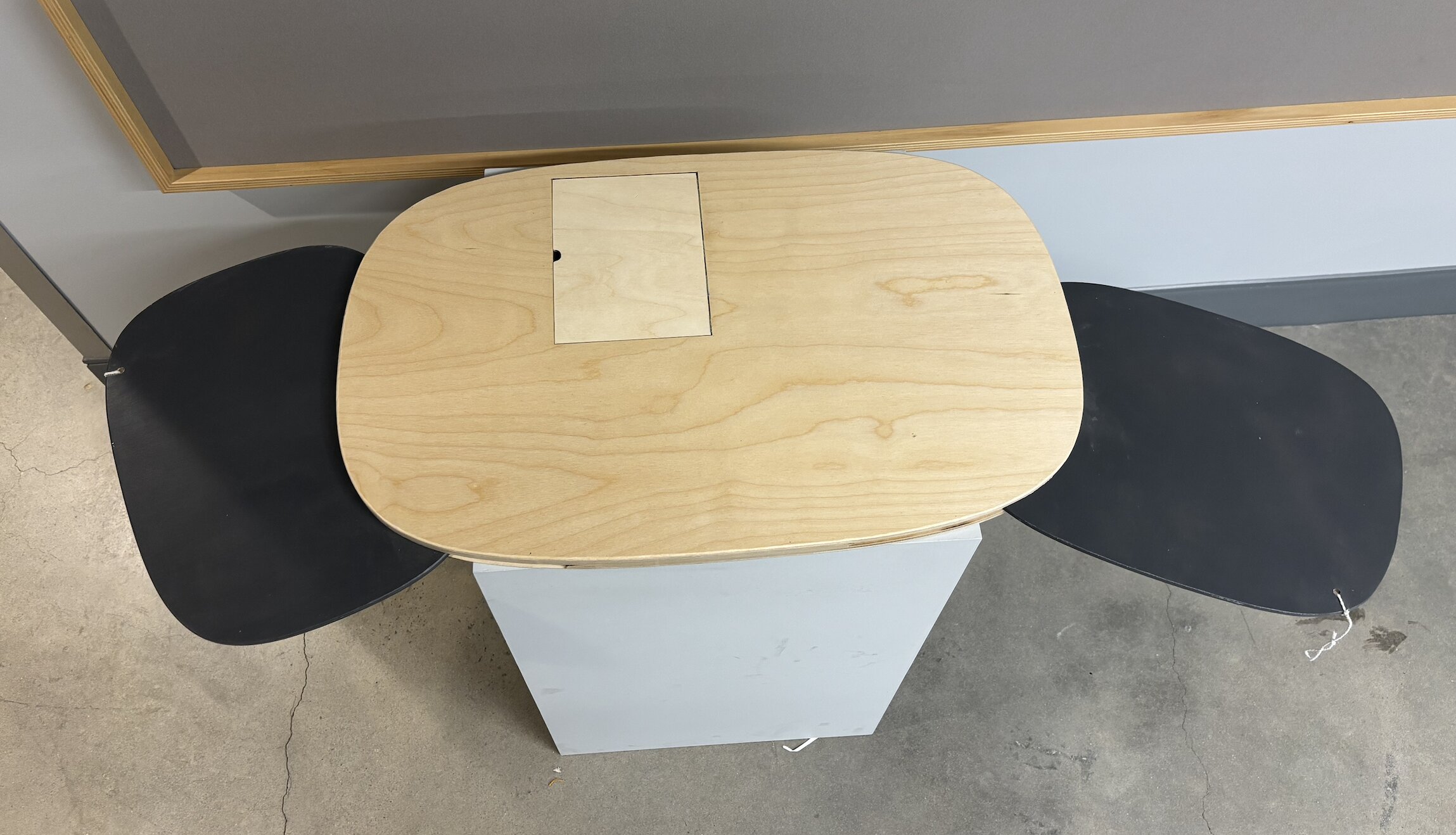Problem Statement and Ideation
We were instructed to develop a table-top product to enhance the dining experience while taking inspiration from Japanese designer Naoto Fukasawa. I did research on how people make connections with each other while dining and how this differs from the solo dining experience. While dining alone, people often are simultaneously doing other activities, such as working, and don't always eat at a dining table. Eating and working at the same table can get cluttered and messy, so I wanted to redesign the table experience to separate eating and working.

PRELIMINARY SKETCHES




SKECH MODELS








DESCRIPTIVE SKETCHES



First Full-Scale Model

After making sketch models, I narrowed my ideas down to one design. I first modeled my new table design using OnShape. I used this CAD model to create a full-scale physical model.

My first full-scale model was made out of plywood and MDF, which were laser cut. The model, which only features the tabletop and not the table leg, has one main surface with two side surfaces that extend out from underneath.


User Testing and Crafting the Final Product
USER TESTNG
I brought my tabletop home to test with myself and others. I sat up in bed with the table and spent some time using my computer on it.
I also brought it to my friends' apartments and had them test it out as well to help me refine the size and shape of the main surface and side surfaces.
I also brought it to my friends' apartments and had them test it out as well to help me refine the size and shape of the main surface and side surfaces.


MANUFACTURING



Final Model and Renderings






